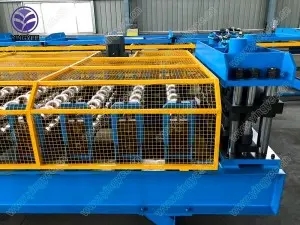
The Evolution and Importance of Steel Pipe Making Machines
Steel pipes play a crucial role in a variety of industries, including construction, oil and gas, and water supply. The manufacturing of these pipes involves sophisticated machinery known as steel pipe making machines. Over the years, these machines have evolved significantly, incorporating advanced technologies and innovations that enhance productivity, quality, and efficiency.
The Basics of Steel Pipe Production
The production of steel pipes generally involves several key processes, including steel casting, hot rolling, and cold forming. Initially, steel is crafted into a slab or billet, which is then reheated and rolled into a desired shape. The rolled steel undergoes various processes to create the specific pipe dimensions required for different applications. Steel pipe making machines are designed to automate these processes, ensuring consistent quality and maximizing production speed.
Types of Steel Pipe Making Machines
There are several types of steel pipe making machines, each serving a distinct purpose in the manufacturing process
1. Pipe Forming Machines These machines are responsible for shaping the steel into a pipe form. They typically utilize methods such as roll forming or extrusion. Roll forming machines are especially popular for creating longitudinally welded pipes, while extrusion machines provide options for seamless pipes.
2. Welding Machines After the pipes are formed, welding becomes a crucial step. Welding machines ensure that the edges of the steel sheets are fused together, creating a strong bond. Various welding techniques can be employed, including TIG (Tungsten Inert Gas), MIG (Metal Inert Gas), and high-frequency induction welding, depending on the required specifications.

3. Cutting Machines Once the pipes are welded, they need to be cut to specific lengths. Cutting machines, often equipped with laser or plasma technology, offer precision and high-speed cutting capabilities, resulting in minimal wastage and improved product consistency.
4. Finishing Machines After cutting, pipes may require additional processes such as surface finishing, coating, or testing. Finishing machines enhance the durability and appearance of the pipes, making them suitable for various environmental conditions.
Technological Advancements
Recent advancements in technology have revolutionized the steel pipe making industry. The integration of computer numerical control (CNC) systems allows for precision manufacturing, reducing human error and improving overall efficiency. Additionally, Industry 4.0 principles are being adopted, enabling the machines to connect and communicate, thereby optimizing production through real-time data analysis.
The rise of automation and robotics has also significantly reduced labor costs and enhanced safety in manufacturing environments. These technologies facilitate a more streamlined operation, allowing for continuous production and reduced downtime.
The Importance of Quality Control
Quality control is paramount in the production of steel pipes. Steel pipe making machines are often equipped with sophisticated testing mechanisms to ensure that the finished products meet industry standards. Non-destructive testing methods, such as ultrasonic and X-ray tests, are employed to detect any internal flaws or inconsistencies.
In conclusion, steel pipe making machines are integral to the efficient production of steel pipes used across various sectors. As technology continues to evolve, these machines will become even more advanced, resulting in higher quality products and greater efficiency. The ongoing investment in modern machinery not only boosts productivity but also supports the global demand for robust and reliable steel pipes, essential for infrastructure development and energy resources.